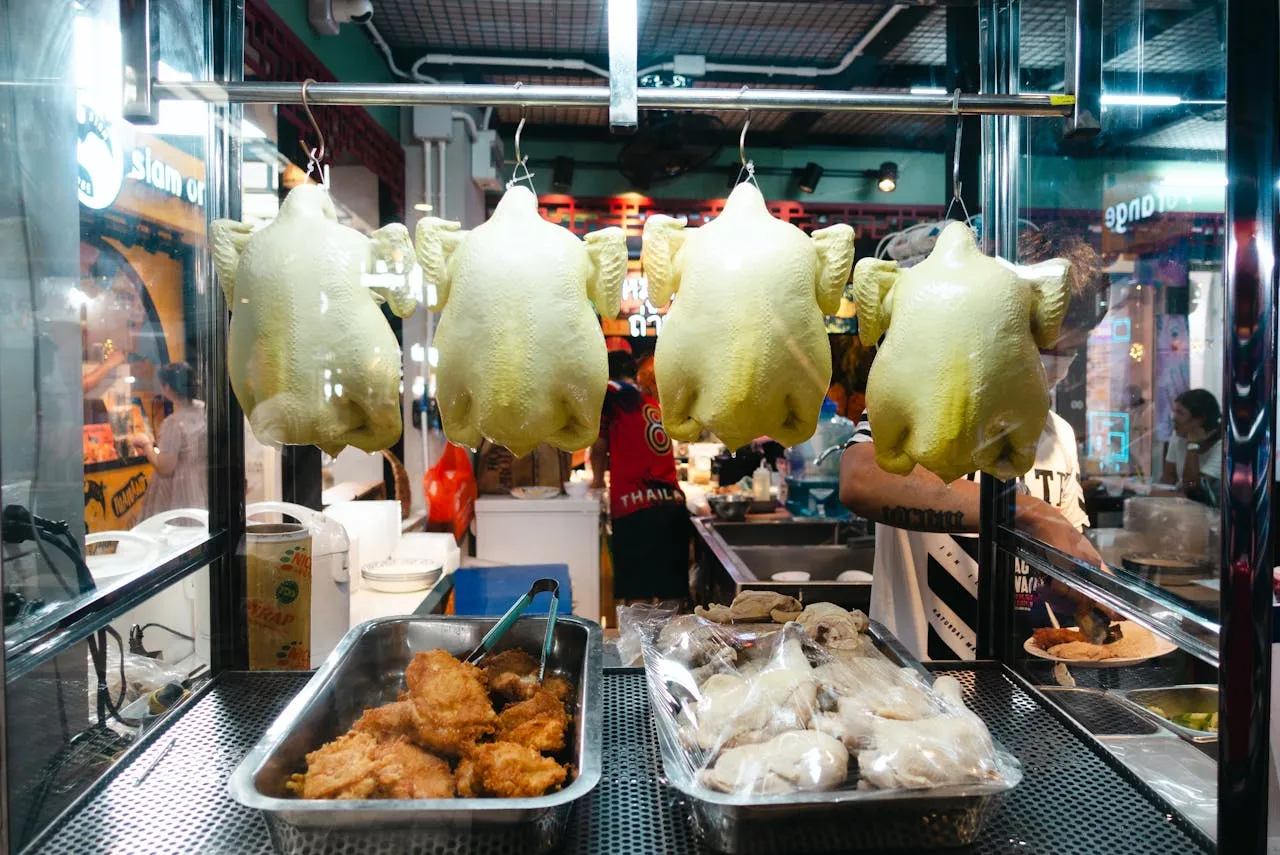
Chicken Market Forecast 2025-2033: Trends, Growth Drivers, and Challenges
The latest “Chicken Market Size and Share Analysis – Growth Trends and Forecast Report 2025-2033″. The report provides a comprehensive analysis of the chicken market, projecting its value to reach $268.35 billion by 2033, up from $160.62 billion in 2024, representing a compound annual growth rate (CAGR) of 5.87% from 2025 to 2033.
Market Growth Drivers
Chicken Market Several factors contribute to the steady expansion of the chicken market, including the increasing demand for affordable protein sources, the rapid growth of quick-service restaurants (QSRs), advancements in poultry farming, and the increasing popularity of processed and ready-to-eat chicken products.
1. Rising Global Demand for Protein
One of the primary factors driving the growth of the chicken market is the increasing global demand for protein. As the world population continues to grow, especially in developing nations, there is an increasing need for affordable, high-quality protein sources. Chicken is significantly more economical than beef or pork, making it a cost-effective protein alternative.
Additionally, as consumers become more health-conscious, chicken remains a preferred choice due to its high protein and low-fat content. With essential nutrients such as iron, phosphorus, and vitamins B6 and B12, chicken consumption is rising, especially among fitness-conscious individuals and those seeking lean meat options.
2. Expansion of the Food Processing Sector
The growth of the food processing sector has played a pivotal role in the expansion of the chicken market. The development of processed and value-added chicken products, such as marinated chicken, pre-cooked nuggets, and frozen chicken meals, has made poultry more convenient and accessible to consumers worldwide.
Advancements in poultry farming techniques have significantly improved productivity and meat quality. Some key improvements include:
- Selective Breeding: Producing high-yield chickens with better meat quality.
- Optimized Feed Formulas: Ensuring improved growth rates and nutritional value.
- Disease Control Measures: Preventing outbreaks and improving flock health.
- Automation & Biosecurity Systems: Reducing labor costs and ensuring efficient production.
These developments have led to higher yields, reduced production costs, and enhanced meat quality, ensuring that the chicken market remains cost-competitive and sustainable.
3. Growth of Fast Food and Quick-Service Restaurants (QSRs)
The expansion of fast food chains and quick-service restaurants (QSRs) has significantly impacted the demand for chicken. Major fast-food brands such as KFC, McDonald’s, Popeyes, and Chick-fil-A have built their business models around chicken-based menu items, including fried chicken, chicken sandwiches, nuggets, and wings.
Factors driving the demand in this segment include:
- Urbanization: Increasing work hours and busy lifestyles have fueled the need for quick, convenient meals.
- Food Delivery Services: The rise of online food ordering platforms has further boosted QSR sales.
- Consumer Preferences: Growing interest in chicken-based fast food options as a healthier alternative to red meat.
As QSRs continue to expand their global footprint, the demand for chicken-based fast food is expected to rise, contributing to the market’s overall growth.
Market Challenges
While the chicken industry is on a strong growth trajectory, there are several challenges that could potentially impact its expansion, including animal welfare concerns, environmental issues, and competition from plant-based alternatives.
1. Animal Welfare Issues
With increasing consumer awareness regarding animal welfare, factory farming practices have come under scrutiny. Concerns such as overcrowding, inhumane breeding conditions, and the use of antibiotics in poultry farming have led to stricter regulations and higher production costs.
To address these issues, several poultry producers have begun adopting ethical farming practices, such as free-range and organic chicken farming, to cater to the growing demand for ethically sourced poultry products. However, implementing these practices while maintaining profitability remains a challenge.
2. Environmental Impact and Sustainability Concerns
Although chicken production has a lower environmental impact than beef or pork, concerns about deforestation, water consumption, and greenhouse gas emissions remain. The poultry industry has been exploring sustainable farming solutions, including:
- Alternative feed sources to reduce the carbon footprint.
- Waste management technologies to minimize pollution.
- Sustainable packaging and eco-friendly production methods to align with global sustainability trends.
As consumers become more environmentally conscious, chicken producers must continue to innovate and adapt to sustainable farming methods to maintain consumer trust and meet regulatory requirements.
3. Competition from Plant-Based Alternatives
The rise of plant-based meat alternatives poses a growing threat to the chicken industry. Products such as plant-based chicken nuggets, patties, and tenders are gaining traction, particularly among consumers who prioritize health, environmental sustainability, and animal welfare.
Leading plant-based brands, including Beyond Meat, Impossible Foods, and Quorn, have developed high-quality, protein-rich chicken substitutes that closely mimic the taste and texture of real chicken. As consumer demand for vegan and vegetarian options rises, traditional chicken producers may face increased competition from plant-based alternatives in the coming years.
Key Market Players and Competitive Landscape
The chicken market is dominated by several leading global players, including:
- Tyson Foods, Inc. – One of the largest poultry producers in the world, supplying chicken to both retail and foodservice industries.
- Pilgrim’s Pride Corporation – A major player in the U.S. poultry market with operations spanning multiple countries.
- Danish Crown Group – A European leader in poultry and meat production, focusing on sustainability initiatives.
- BRF S.A. – A Brazilian multinational known for its large-scale poultry production and exports.
- WH Group – A Chinese food processing giant with a growing presence in the poultry market.
- Hormel Foods Corporation – A diversified food company with significant poultry product lines.
- Wens Foodstuff Group – A key player in the Asian poultry market, catering to domestic and international consumers.
These companies continue to invest in technological advancements, sustainable practices, and strategic partnerships to stay competitive in the evolving market.
What Lies Ahead for the Chicken Market?
The chicken market is expected to grow steadily, fueled by increasing demand from emerging economies, expanding QSR chains, and evolving consumer preferences for high-protein diets. However, addressing sustainability concerns, ethical farming practices, and competition from plant-based alternatives will be crucial for maintaining market growth.
Some key trends expected in the coming years include:
- Innovations in Poultry Farming: AI-driven automation, improved feed efficiency, and smart monitoring systems will enhance productivity.
- Health-Focused Chicken Products: The rise of antibiotic-free, organic, and free-range chicken will cater to health-conscious consumers.
- E-commerce and Direct-to-Consumer Sales: Online grocery platforms and home delivery services will streamline chicken distribution.
- Global Market Expansion: Rising demand in Asia-Pacific, Latin America, and the Middle East will drive new growth opportunities.
Overall, the chicken industry is well-positioned for long-term growth, but market players must adapt to consumer preferences, regulatory changes, and sustainability demands to remain competitive in the years ahead.







